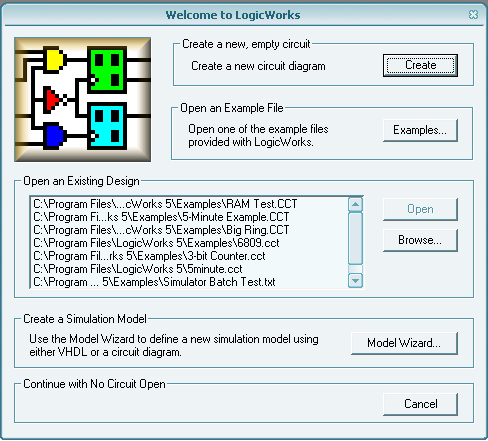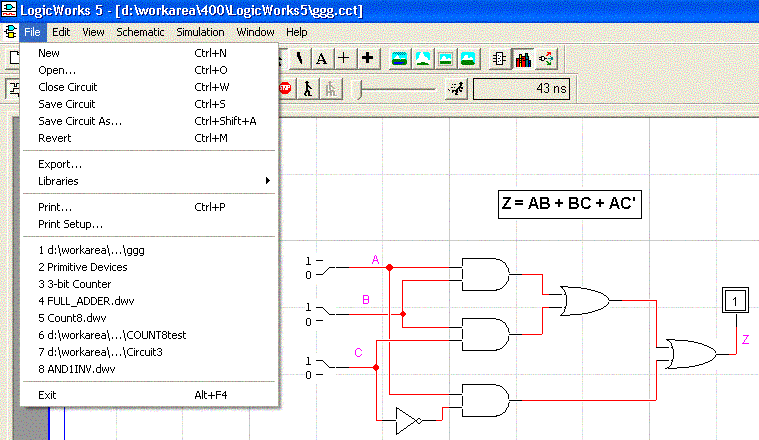

Press down on the mouse button to place theAND gate in the circuit window. Note that the pointer turns into animage of the AND gate. Move the pointer to themiddle of the Circuit window. With the mouse button still held down,select AND-2 (it should be in "inverse%20video" if you did the rightthing ).

Select atwo-input AND gate (point the mouse at the word Libraries inthe title bar, press the mouse button, and while holding it down,drag the mouse down to select the word Gates). The little arrow at thebottom of the menu means that there are more choices.

The (partial)contents of the device menus are shown below.
Logicworks 5 student series#
It is possible to create libraries ofadditional devices (the 7400 series devices are included this way they are not really built into LogicWorks) or to create certain kindsof devices on the fly, which we will see in later labs. In fact, these choices of devices are only whatis available by default. The 7400 series is a collection of frequentlyused TTL components. With the possible exception of +5V and ground, we will not beusing these very much. Discrete devices consist ofelectrical components, such as power supply connections, batteries,etc. I/O includesswitches, keyboards, and probes. Generic devices include more complexbuilding blocks, which we will not be using in this lab. Gates are the standard simple logicgates, such as AND, OR, and NOT. The devicesavailable to you are grouped into five classes or libraries: gates, generic, I/O, discretes, and 7400 series TTL as shown in the menu above. It should look something like the menu above. Make surethat the Circuit window is selected (it will appear highlighted as inthe screen image above). Let's start with a very simple circuit: an AND gate. We are now ready to enter gate schematics. The Circuits window is used for drawing schematics, and the lowerTiming window displays waveforms of instrumented "nodes" (that is,the labeled wires) within the schematic, similar to an oscilloscopetrace. LogicWorks is a tool for entering gate levelschematics of a digital system and performing simulations of itsbehavior.ĭouble-clicking on the LogicWorks icon results in the followingscreen:

In this section, you will use LogicWorks to enter the schematicfor the half-adder. Draw thefull-adder in the space provided. Repeat Problem 1 for the full-adder circuit, which takes threeinputs and produces the two outputs SUM and CARRY. Fill in the truth table for thebehavior of the half-adder: X Y Sum Carry 0 0 0 1 1 0 1 1ĭraw a schematic for the half-adder in the space above. The half-adder is a function that takes two inputs, X and Y, andproduces two outputs, SUM and CARRY.
Logicworks 5 student install#
Install logic works, type the following at the dos prompt: If there is no logic directory on the c drive then. Spelling andmechanics count! You may fill out the tables by hand.any drawingsmust be attached. Please type all of your (attached) written work. If you are familiar with the interface, pleasehelp out fellow students who might not be.įor each lab you will need to hand in the summary sheet (the lastpage of this and future assignments) and any hardcopy requested(indicated in the text by a bullet symbol). If you are unfamiliar with the Windows/Macintosh interface, find afellow student who is familiar with it and work with that person forthis first assignment.
Logicworks 5 student how to#
After completing thisassignment, you should understand how to draw circuit schematics andsimulate simple combinational circuits. This lab will introduce you to LogicWorks. Introduction to Windows/Macintosh(TM) and LogicWorks Label yourattachments (Problem 1, Problem 2, etc., and put them in order). Please fill out this lab and hand it in with the requiredprintouts attached.


 0 kommentar(er)
0 kommentar(er)
